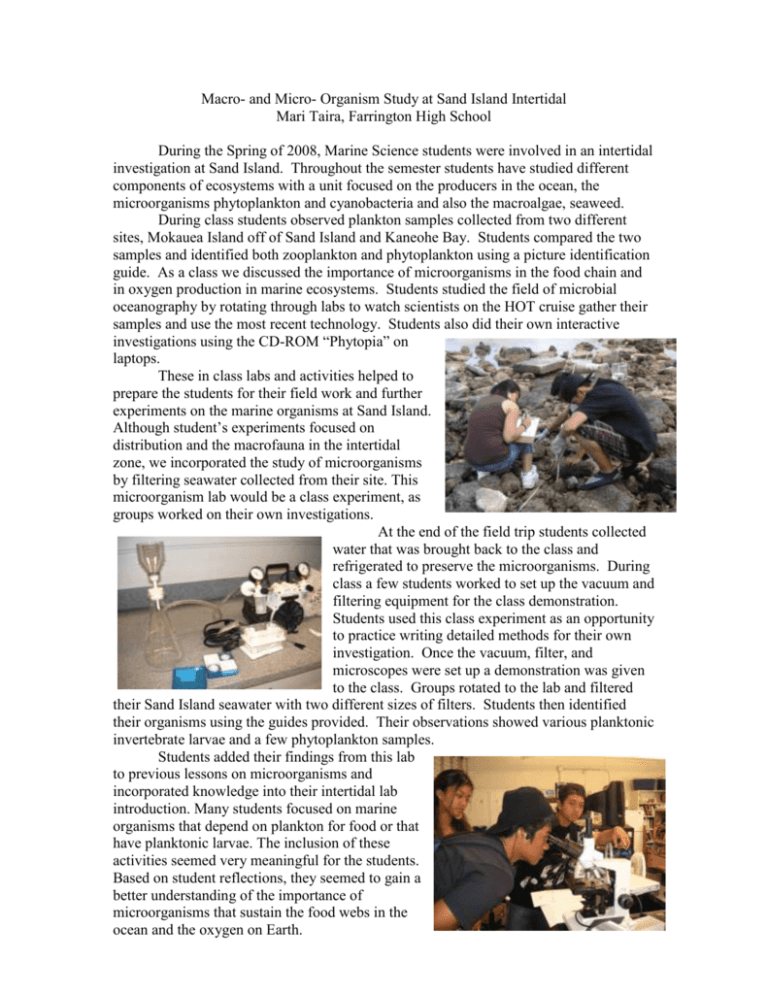Macro- and Micro- Organism Study at Sand Island Intertidal - C-MORE
advertisement

Macro- and Micro- Organism Study at Sand Island Intertidal Mari Taira, Farrington High School During the Spring of 2008, Marine Science students were involved in an intertidal investigation at Sand Island. Throughout the semester students have studied different components of ecosystems with a unit focused on the producers in the ocean, the microorganisms phytoplankton and cyanobacteria and also the macroalgae, seaweed. During class students observed plankton samples collected from two different sites, Mokauea Island off of Sand Island and Kaneohe Bay. Students compared the two samples and identified both zooplankton and phytoplankton using a picture identification guide. As a class we discussed the importance of microorganisms in the food chain and in oxygen production in marine ecosystems. Students studied the field of microbial oceanography by rotating through labs to watch scientists on the HOT cruise gather their samples and use the most recent technology. Students also did their own interactive investigations using the CD-ROM “Phytopia” on laptops. These in class labs and activities helped to prepare the students for their field work and further experiments on the marine organisms at Sand Island. Although student’s experiments focused on distribution and the macrofauna in the intertidal zone, we incorporated the study of microorganisms by filtering seawater collected from their site. This microorganism lab would be a class experiment, as groups worked on their own investigations. At the end of the field trip students collected water that was brought back to the class and refrigerated to preserve the microorganisms. During class a few students worked to set up the vacuum and filtering equipment for the class demonstration. Students used this class experiment as an opportunity to practice writing detailed methods for their own investigation. Once the vacuum, filter, and microscopes were set up a demonstration was given to the class. Groups rotated to the lab and filtered their Sand Island seawater with two different sizes of filters. Students then identified their organisms using the guides provided. Their observations showed various planktonic invertebrate larvae and a few phytoplankton samples. Students added their findings from this lab to previous lessons on microorganisms and incorporated knowledge into their intertidal lab introduction. Many students focused on marine organisms that depend on plankton for food or that have planktonic larvae. The inclusion of these activities seemed very meaningful for the students. Based on student reflections, they seemed to gain a better understanding of the importance of microorganisms that sustain the food webs in the ocean and the oxygen on Earth.











